There’s a certain whimsy that rests within a flower. The best arrangements carry with them a story. Be it in the composition—how your eye skims across a blossom, left to right—or the color variations in an petal. A story full of whimsy is hard to ignore, and that’s exactly what floral designer Teressa Johnson brings to her (well-loved) table.
“We are located in the sleepy and charming small town of Sumner, WA. Our home, which we’ve affectionally named Mayberry House, was built in 1918 and we’ve been part of its timeline for seven of those years,” Teressa shares.
A Studio of Her Own
With over 20 years of floral design under her belt, Teressa’s initial set-up was in a basement with a 6.5-foot clearance, followed by a garage with no running water or insulation. “To say I’ve received an upgrade is a bold understatement, and knowing the sacrifice it took for my husband to relinquish his workspace—as well as hand-build this whole studio—it’s an endearing love letter to me.”
Teressa’s vision sprang to life when she introduced herself to designer Katie LeClerq. “We met a couple of times through mutual friends, but then we started working together and sparked a very dear friendship.” The charming studio was seemingly built around a table ripe for storytelling and whimsy-building. And it’s the perfect place for Teressa to imbue her creations with a passion that goes beyond flowers—one that’s centered around the person seated at the table.
“Why are they here? What relationship do they represent? How can I make them feel honored? What would it be like to be one of these intended guests? I love thinking through details in order to create something deeply meaningful for each person who has a seat at the table.”
Ahead, Teressa invites us into her journey and her delightful floral studio—plus, the designer shares three invaluable tips for arranging your own flowers like a professional.
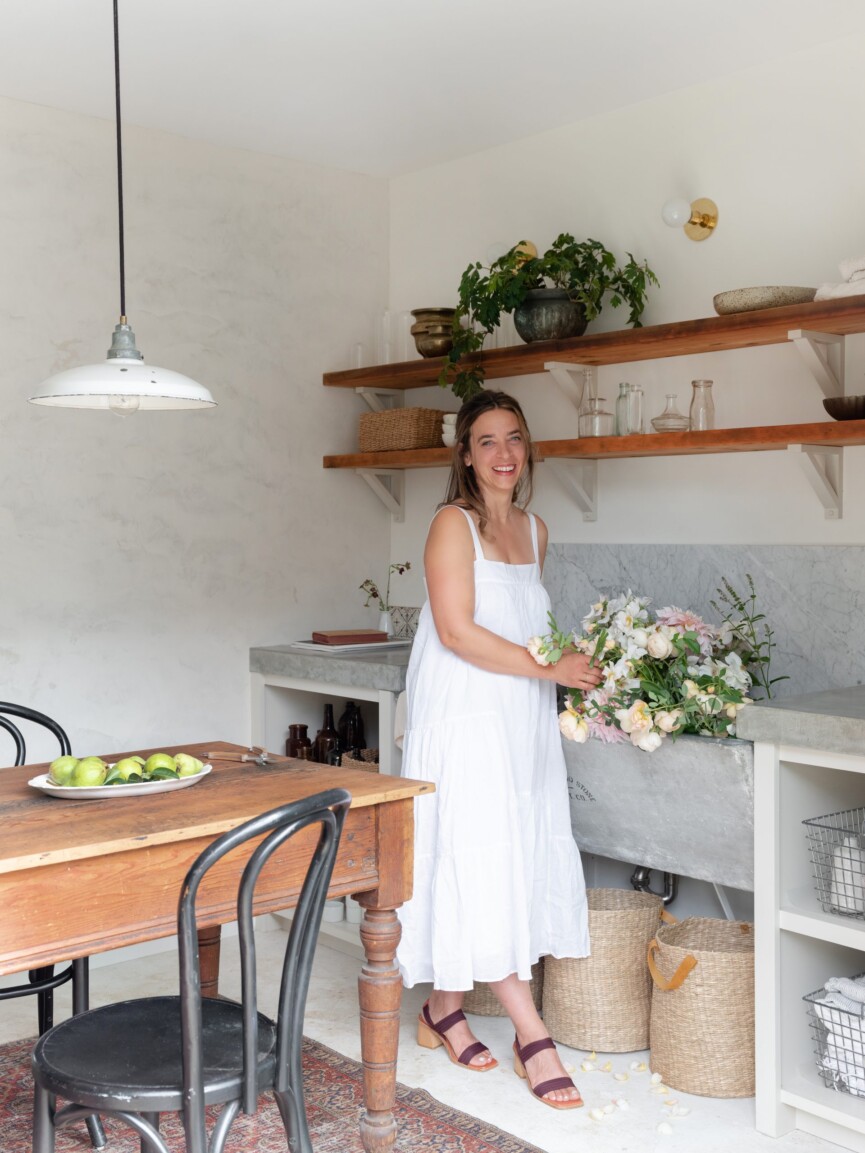
How long have you been designing flowers?
For my thirteenth birthday, I was given three carnations from the grocery store. They promptly found their home on my bedside table and I reveled at how “extra” they were; how transformational they were to my early 90s sponge-painted bedroom. I have a distinct memory of vowing to myself that when I got to be an adult, there would always be fresh flowers in my home.
Where is the most surprising place you find inspiration?
Sources of inspiration seem to be everywhere when I have the luxury to take the time to look around. I spend a lot of time in the car and most of the sparks start to fly when I see weeds in ditches, tumbling vines spilling over fences, and sun-bleached dead things bending to the wind.
I come from a childhood (and still in my life now) where we had to get creative to make ends meet, so I have eyes ever-tuned to look at the ordinary through imaginative lenses. That almost always enhances and inspires my work.
It also helps me to let the natural material dictate what it wants to be, and allows me to let go and dance with it, versus coercing it to fit into a calculated idea. This type of layered inspiration not only informs my approach to working with flowers, but it’s a common thread woven throughout my life. It’s an ethos that plays out through cooking, relating to others, and dealing with the plain truth that we really don’t have much control in life.
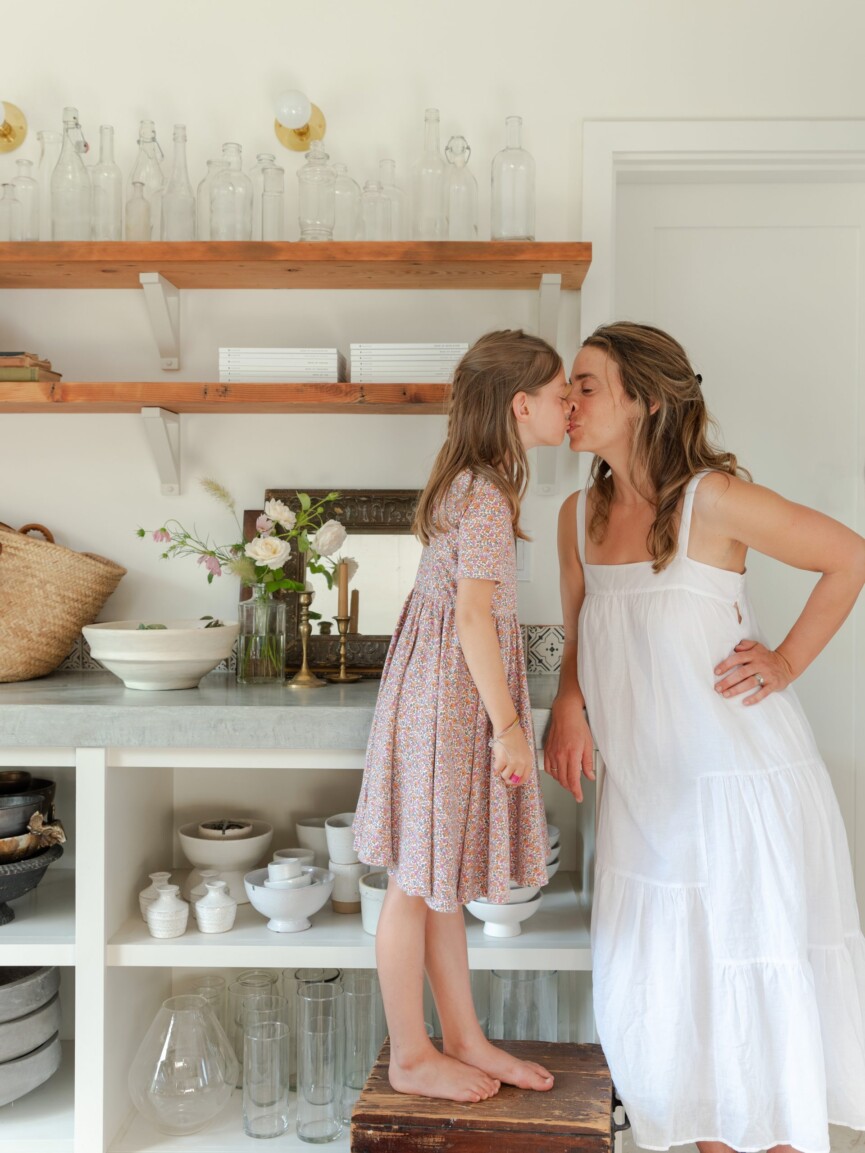
What was your vision for this space?
I wanted to stop the charade of going up and down stairs with rose vines entangling themselves in my compositions. I wanted to stop hearing my lovely, but busy kids from above and have no place of quiet for client phone calls. I wanted natural daylight and ceilings where I could lift an urn and not ram the top of a delicate branch into the low ceiling above.
My vision for this space was a reprieve from all of that, and then I fell headfirst into the creative genius of Katie LeClercq. I think it was just one rendering and I could see what she saw—it was perfect. She is the real deal and understands space and aesthetics like no one I have ever known.
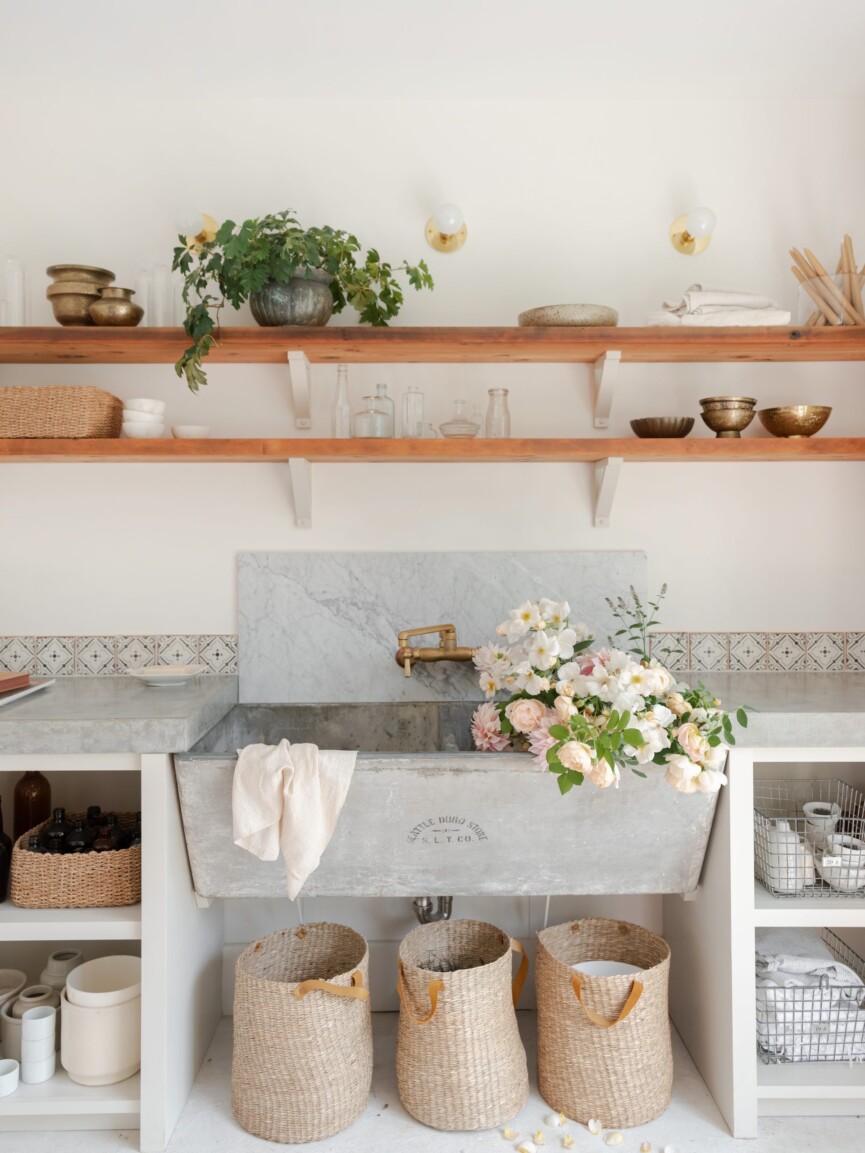
Describe Your Home Studio in Three Words
Timeless, authentic, charming. The main farm table here is like a sacred space—the host of many deep and significant conversations that sweeten the studio for me all the more.
Do You have a favorite piece or feature in your studio?
The sink and the farm table. Both come with a story of restoration, which is a very high priority for me and my husband.
The sink came with the 1918 home but was covered in paint and tucked away in the basement. After waiting two years to find a house in which we could see ourselves building our lives, we toured this one. The bones were alluring, but the kitchen was way too small and sort of dampened my hopes. Crestfallen, we ambled downstairs to the below-ground basement and I spotted the sink! It was the tipping point.
I let go of my kitchen reservations and put an offer on the house. Seven years later, that blessed sink finally got its center stage and emerged from the basement to the top focal point in the studio, and we are still managing in our tiny kitchen. I’d say it was worth it.
The table was part of a client’s family property and they never paid it too much attention. After the project, they generously gifted it to me, seeing that I was swooning over it and they didn’t much care. We strapped it to the minivan, sanded it, and oiled it. It’s become the lifeblood of the studio ever since.
I am happy to report that I currently know more neighbors with a broad swath of diversity, thanks to my unending need to clip and prune and enjoy the foliage and flowers surrounding us.
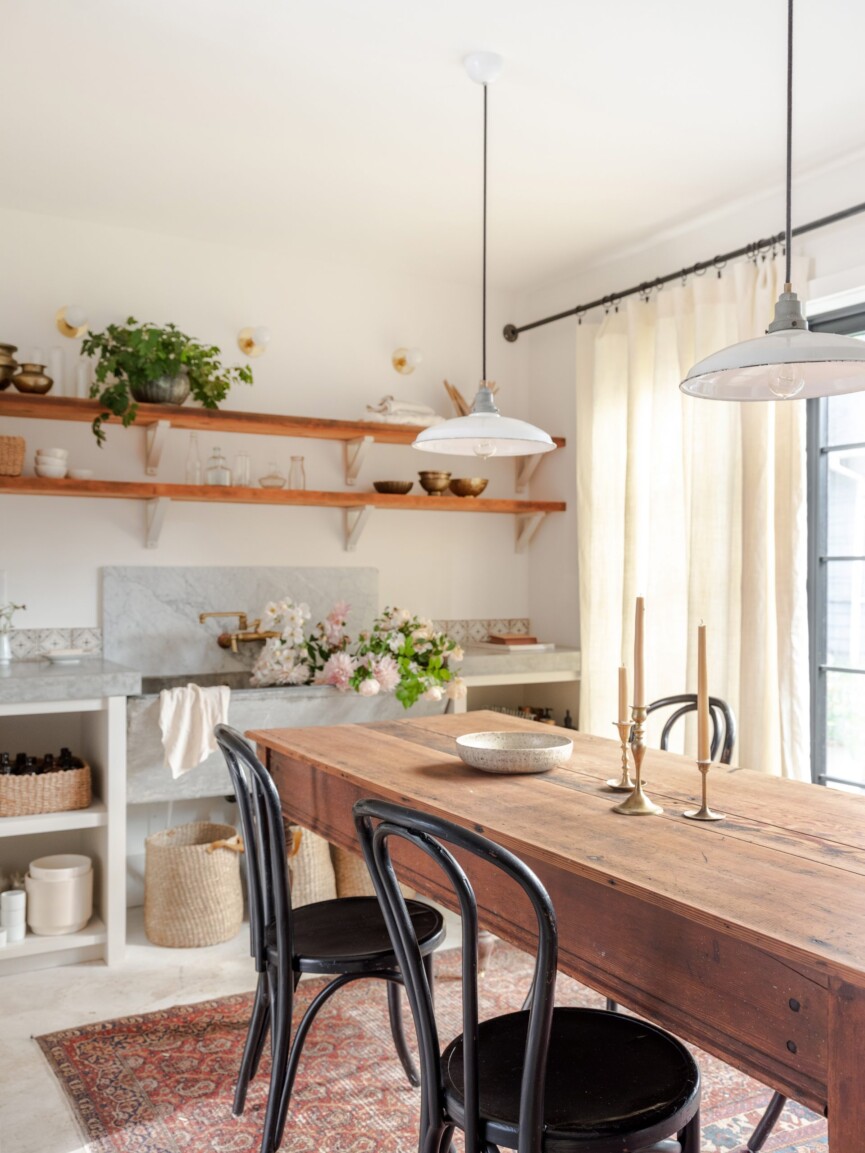
3 Simple Tips For Creating Floral Arrangements
Know Your Essentials
Hands are the most essential tools for all of us. However, I have a special extension on my right hand, and that is called a pair of bypass shears. I absolutely feel the most deft with this in my hand, maybe even more so than with a pen, a cell phone, or a chef’s knife. Of course, there are many levels of quality within this category of shears, but as long as they are sharp and strong, I’m a happy camper. I have them planted all around me… in the car, on the deck, in my studio, in the toolbox. I am always in need of those shears.
Source Well
Support all the farmers! I cannot say enough about the dear folks who devote their lives to cultivating beauty for us. If you can grow your own flowers, do it. If you can’t, go support the small farms and growers who do all the work, in all the seasons, to bring us their offerings. I am in the NW, and we are blessed with so many incredible growers, who do everything possible to show up for us, consider our colors and the nuances we each tend towards, and sometimes even grow new varieties with specific designers in mind.
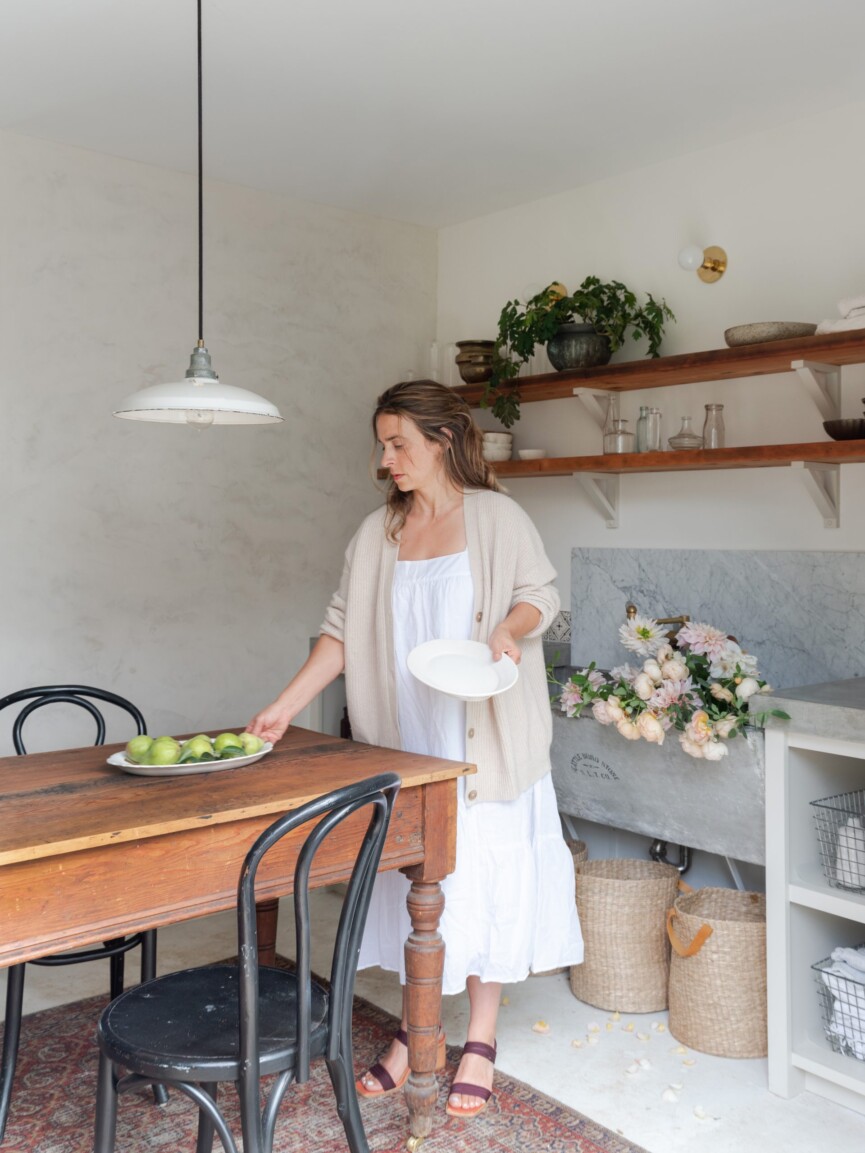
Practice Sustainability (There’s a Surprising Benefit!)
As far as plants go, it’s important to know how and when to prune in order to create a symbiotic relationship with plants. If one knows how to snip and prune, the plant is encouraged to grow and flourish, and it becomes a win/win situation for all. I am not a professional gardener, but the basic instruction in this is to clip (using aforementioned bypass shears, NOT SCISSORS) at an angle, just above the node. This will encourage further growth in the plant, and of course, provides you with the desired cut flower or branch for home arrangements.
As far as relationships go, I am a strong advocate for meeting your neighbors. If a neighbor has something growing in her yard and I love it, I knock on the door and introduce myself. A compliment to a garden is never unwanted, and an offer to purchase cuts from it is even better. However, I usually end up with a new friend, flowers I love, and a batch of warm cookies left in her hands as not one neighbor so far has ever wanted any money. Thus begins a new relationship that might otherwise never happen. I am happy to report that I currently know more neighbors with a broad swath of diversity, thanks to my unending need to clip and prune and enjoy the foliage and flowers surrounding us.

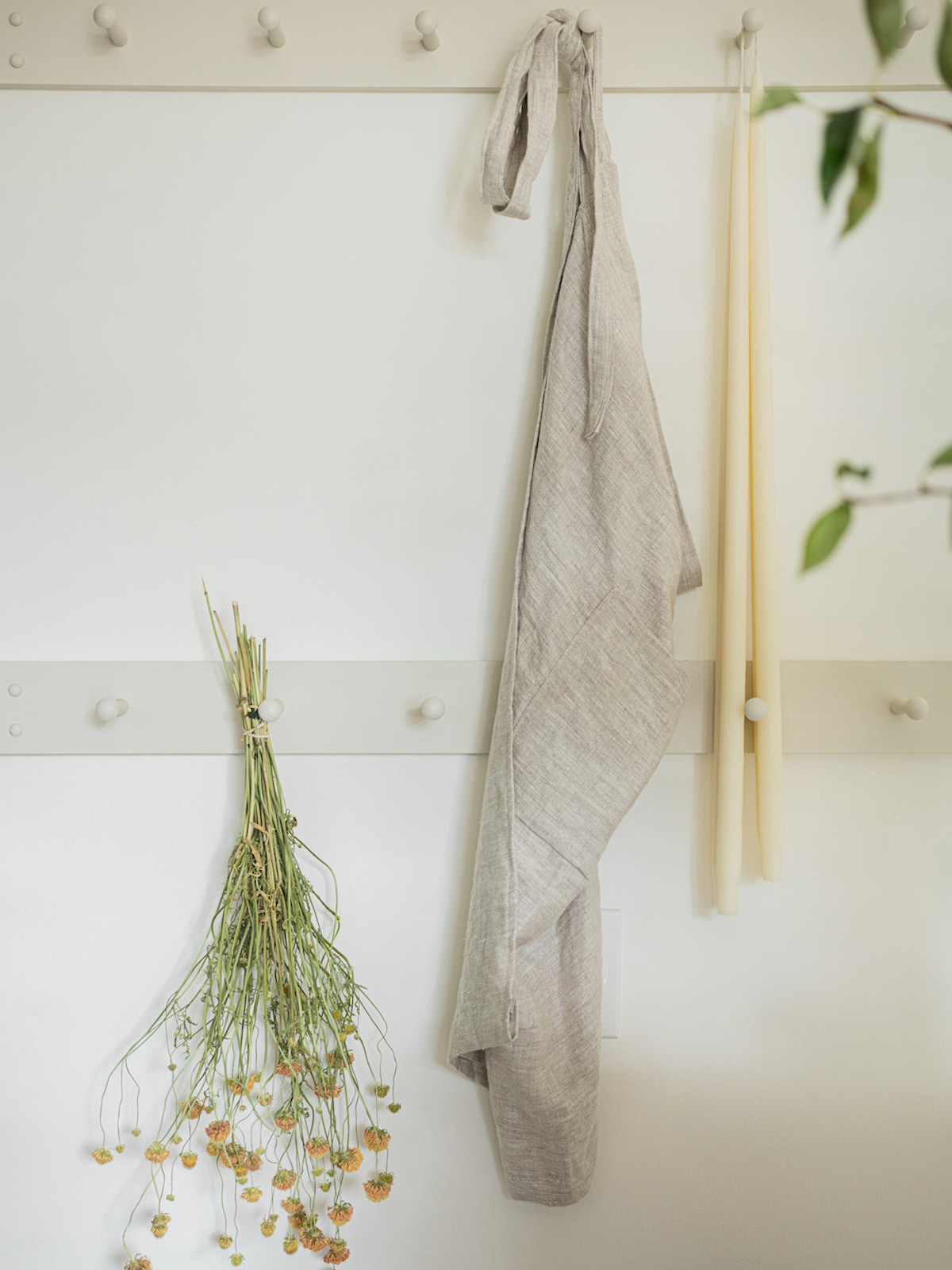
Resources:
photography: Kara Mercer
styling/interior design: Katie LeClercq
open cabinetry paint: Benjamin Moore Edgecumbe Gray
built-in cabinets paint: Benjamin Moore Street Chic
faucet: Chicago Faucets
appliances: Smeg
area rugs: Woven Abode and Jean Palmer Home
lighting over the large table: 1st Dibs
sconces: Ramsey Conder
pendant over small round table: Jayson Home
plaster work on the wall: Julianne Johnson
concrete countertops: Concrete Project
lower shelves: Casual Surveying Co.


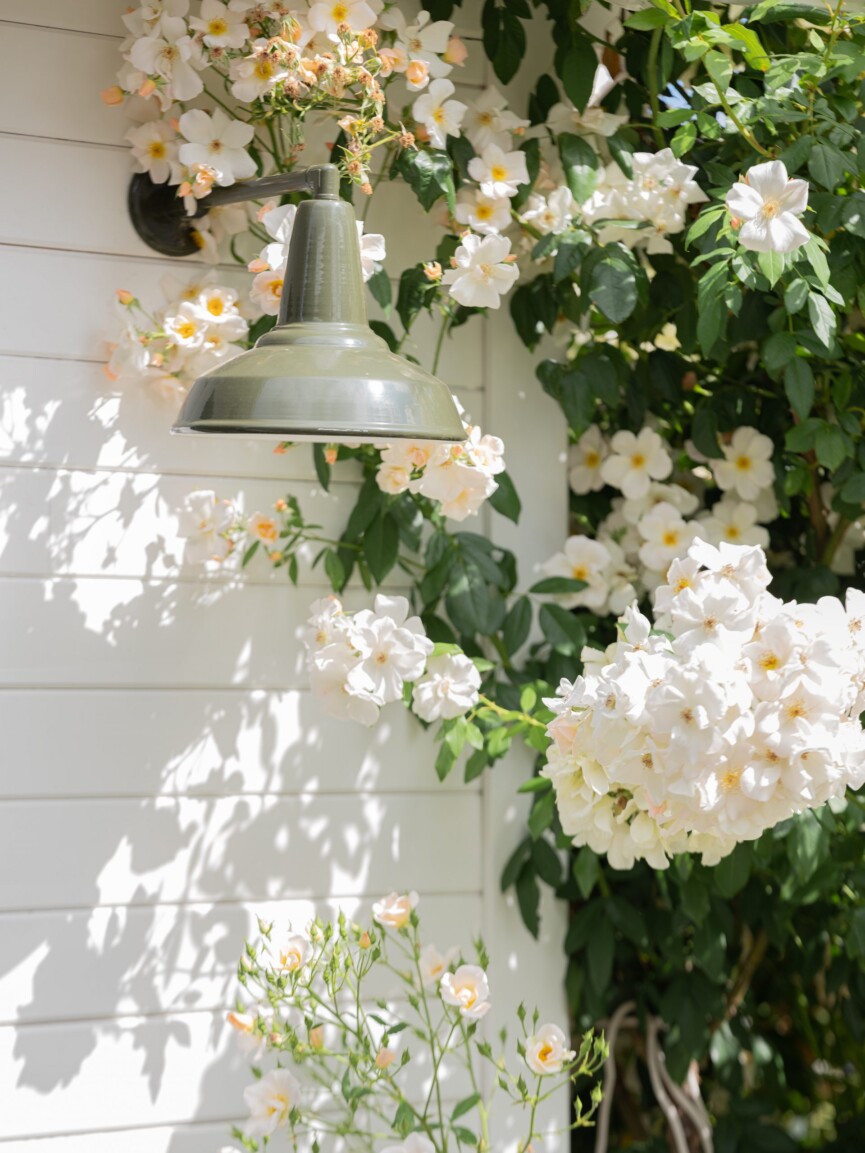
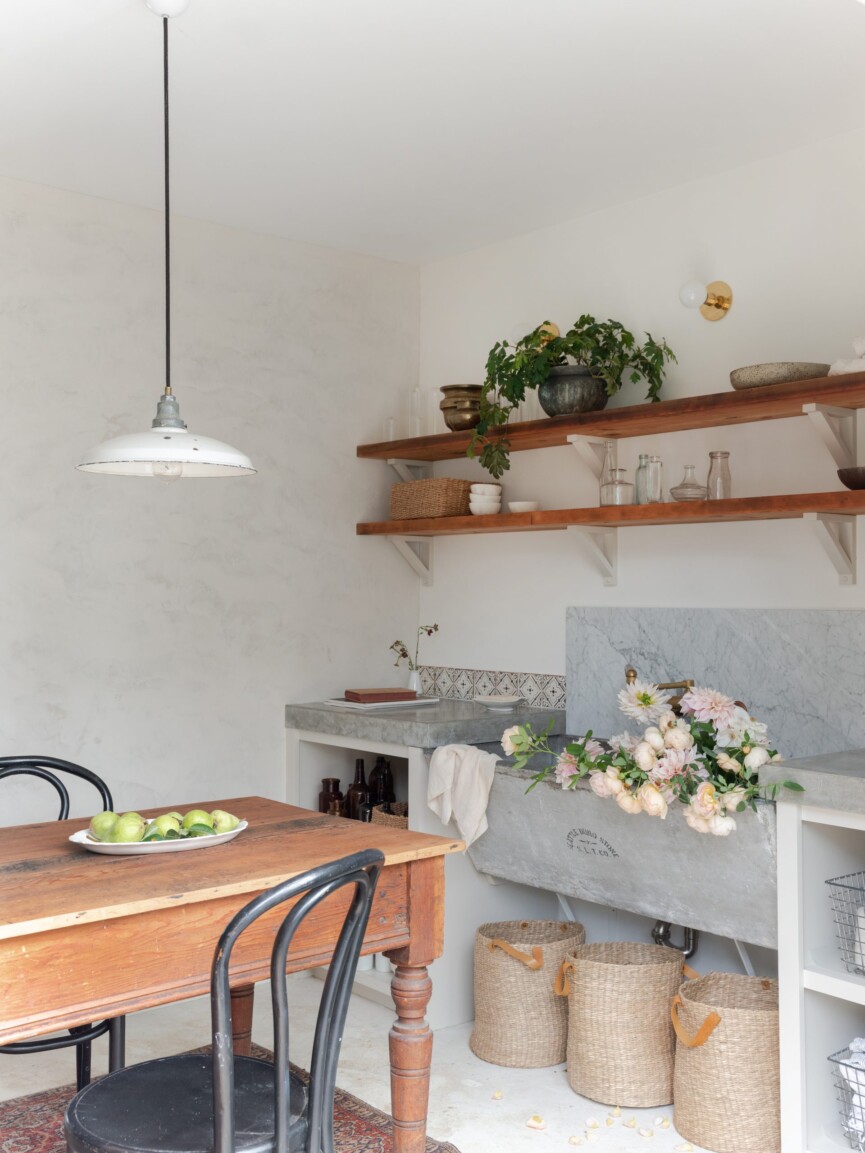
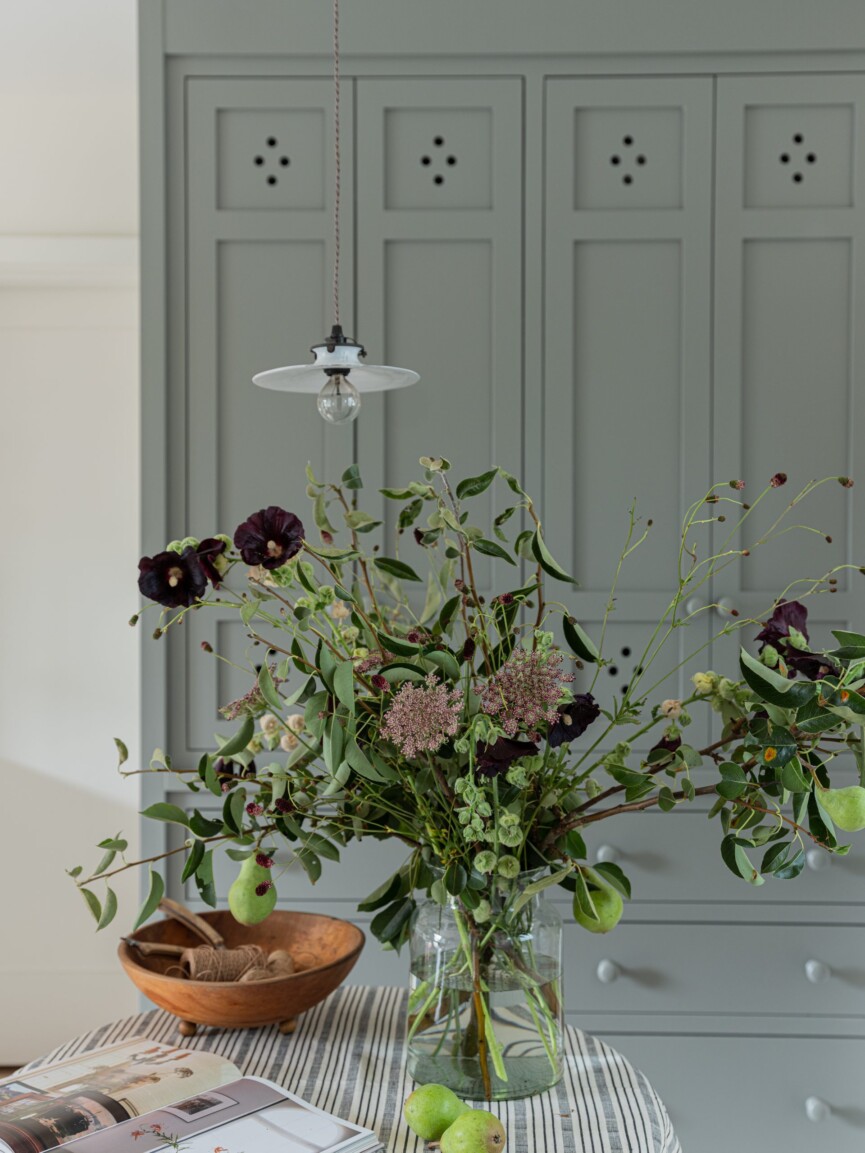
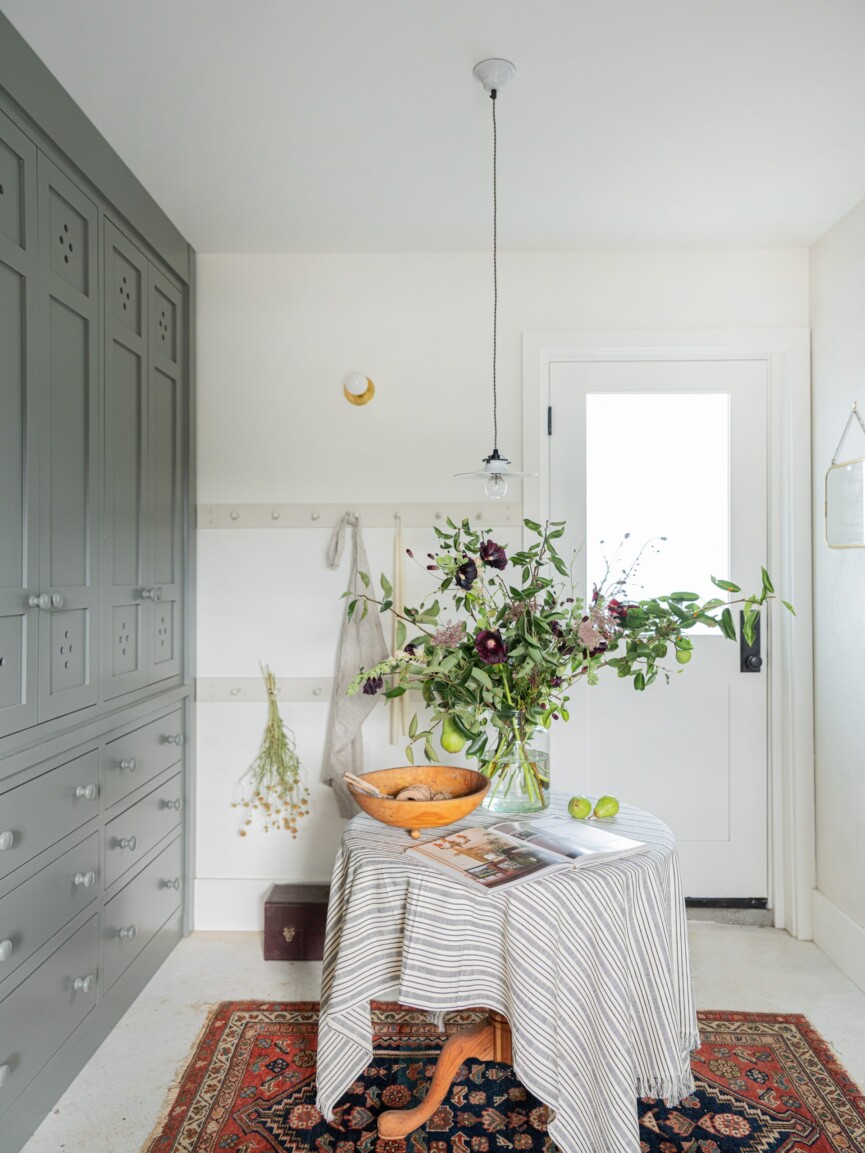
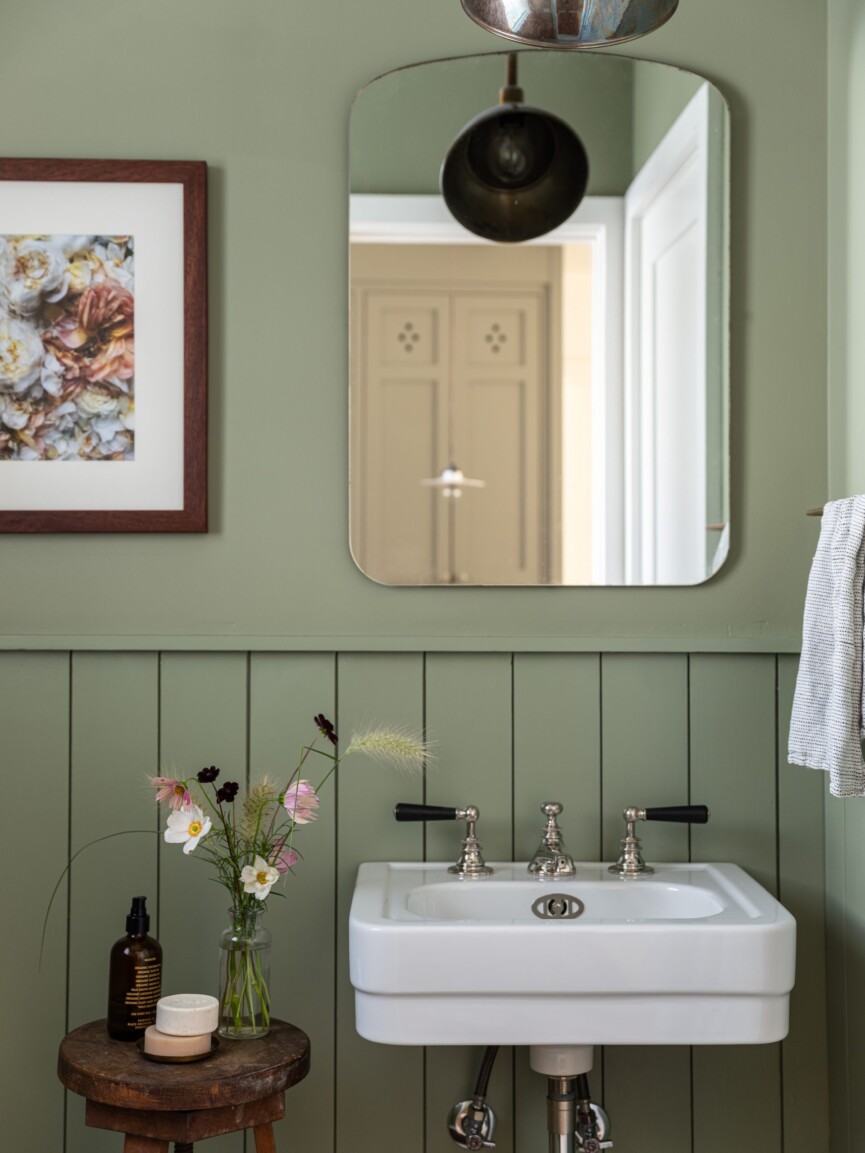
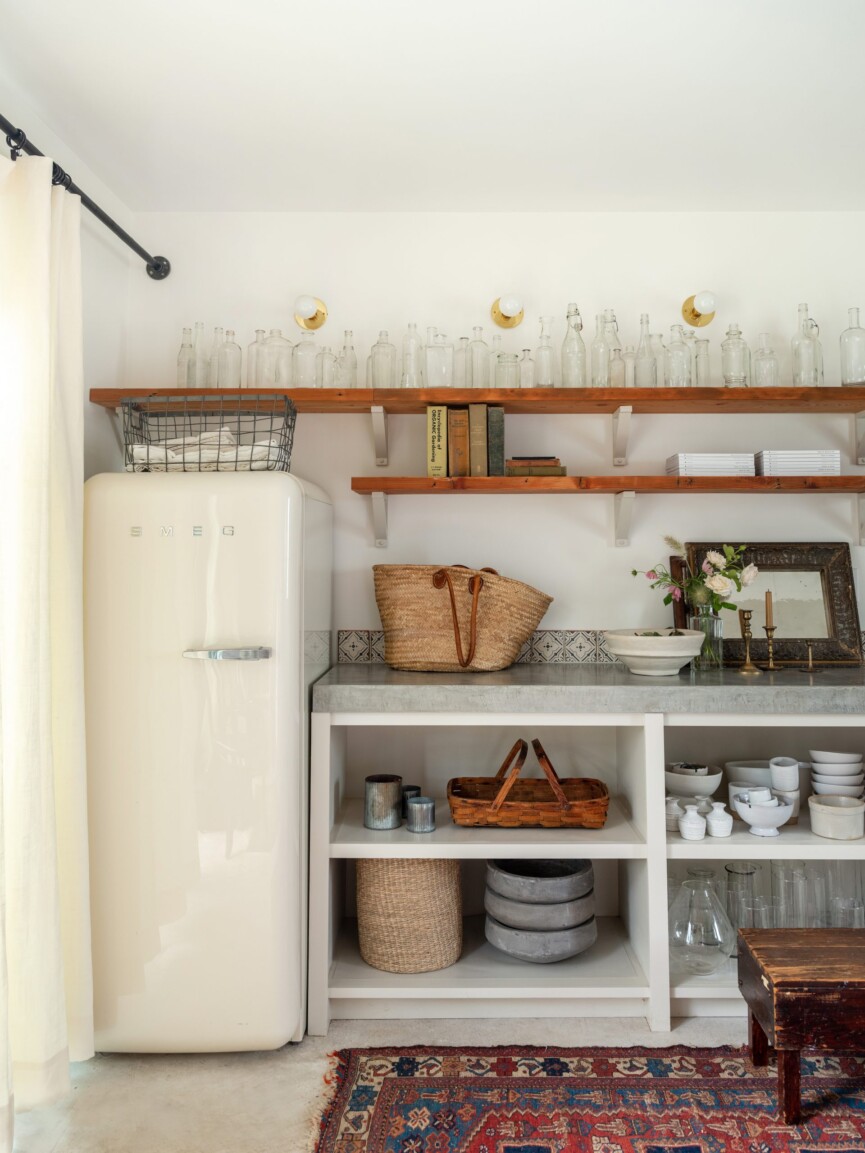
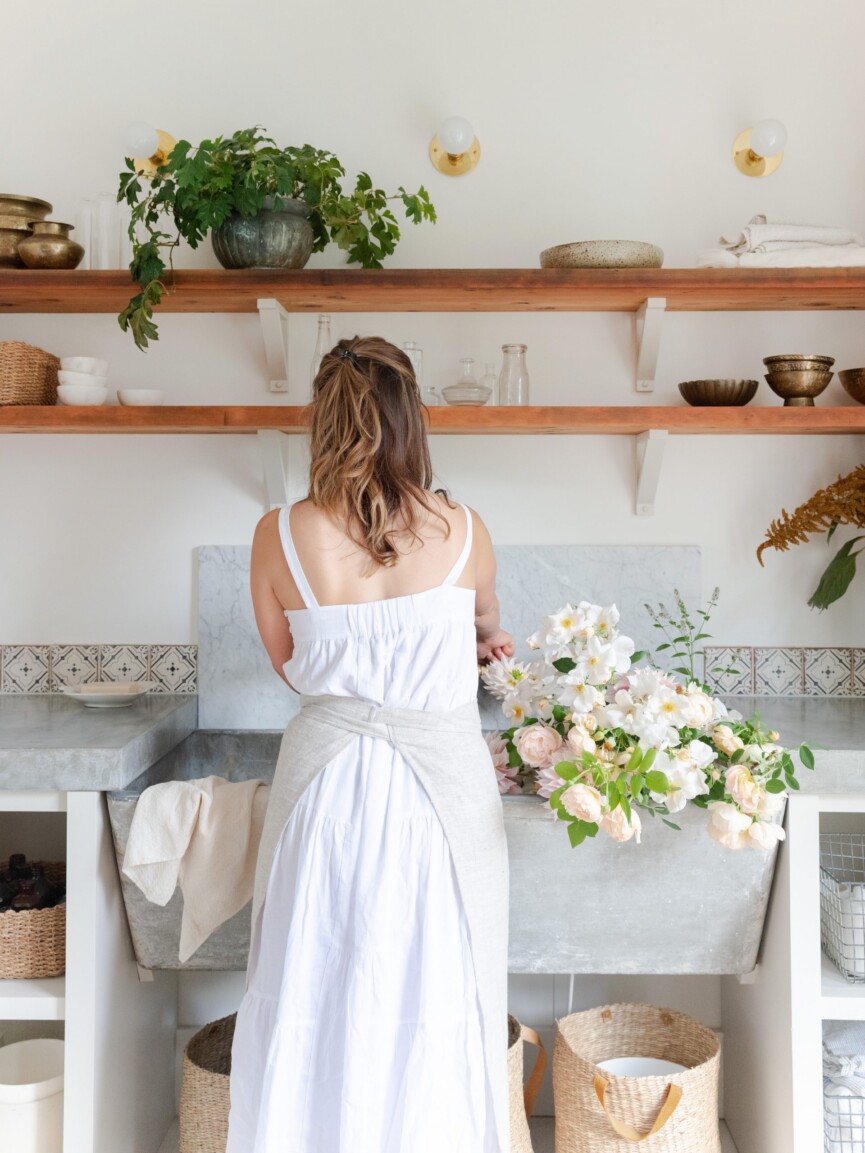
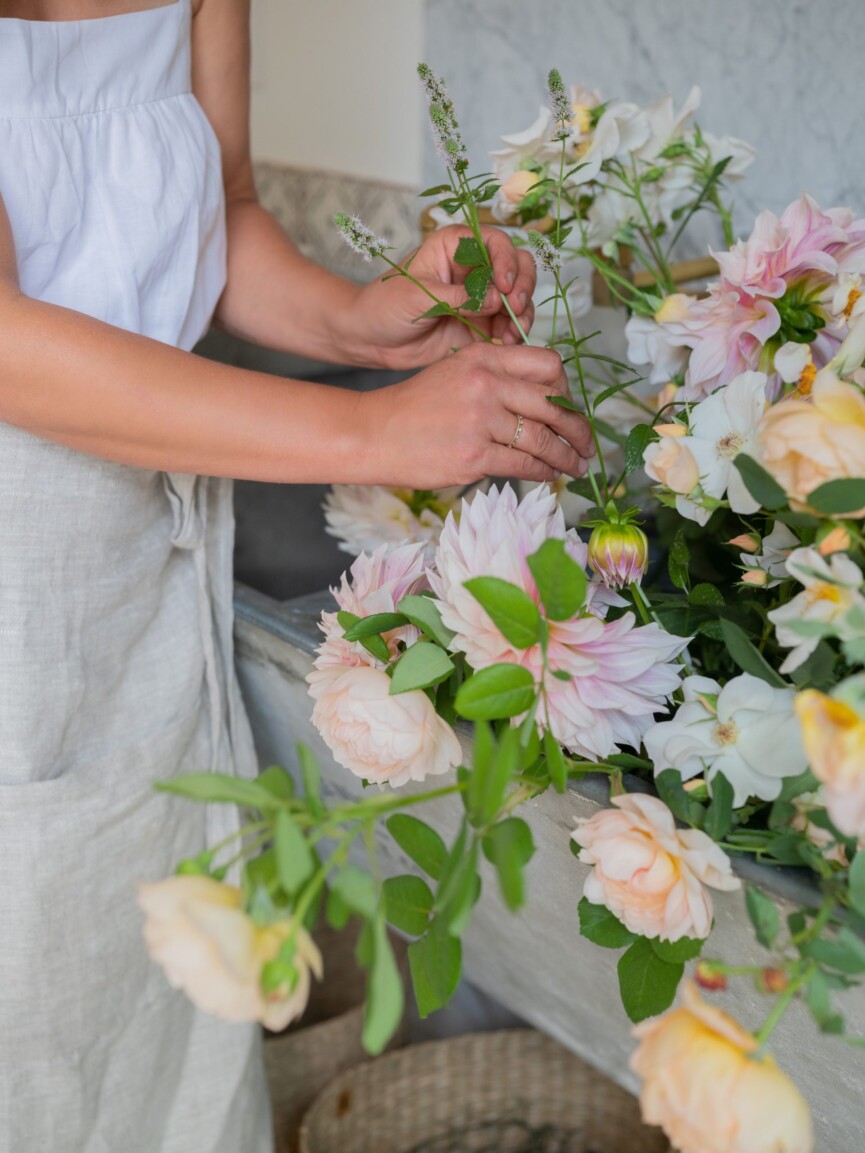
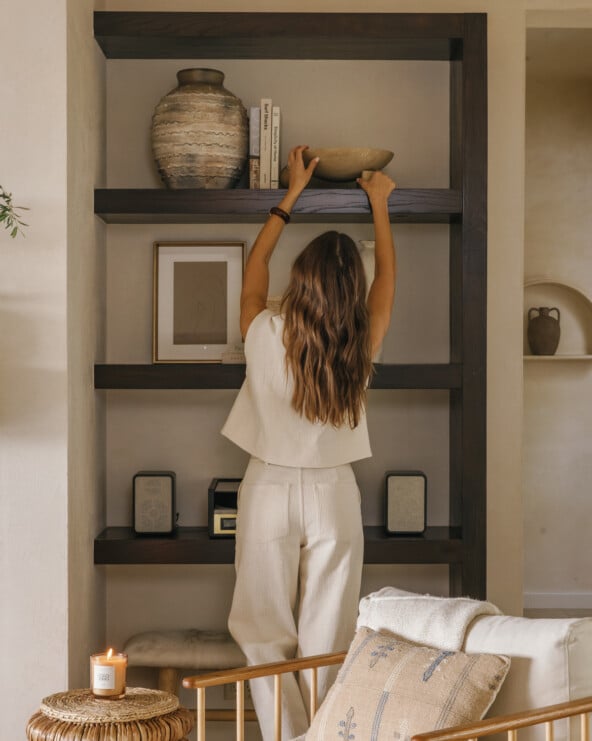

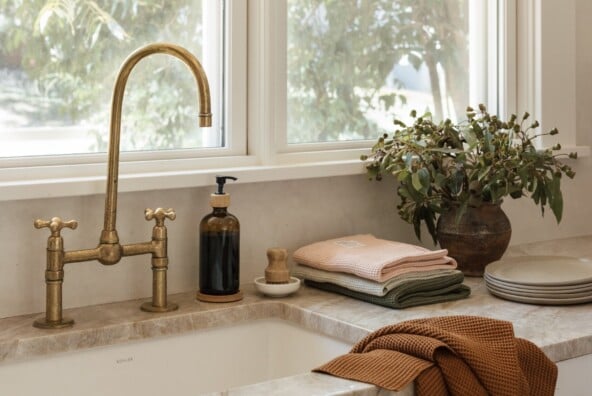
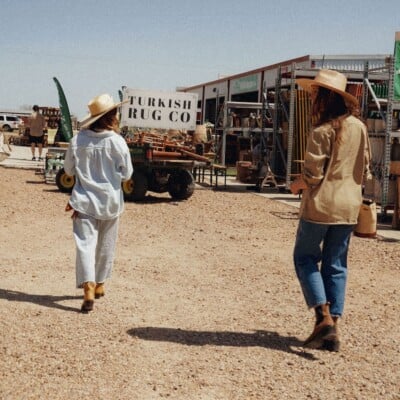
I loved this article and the dress that you are wearing! Where can I get one?
Hi Mara! The dress is from Jenni Kayne, and I think it’s still available. ??
So beautiful and simple and inspiring!
Every detail is utter perfection. This is the best thing I’ve seen on the internet in a long time. Understated and so beautiful.